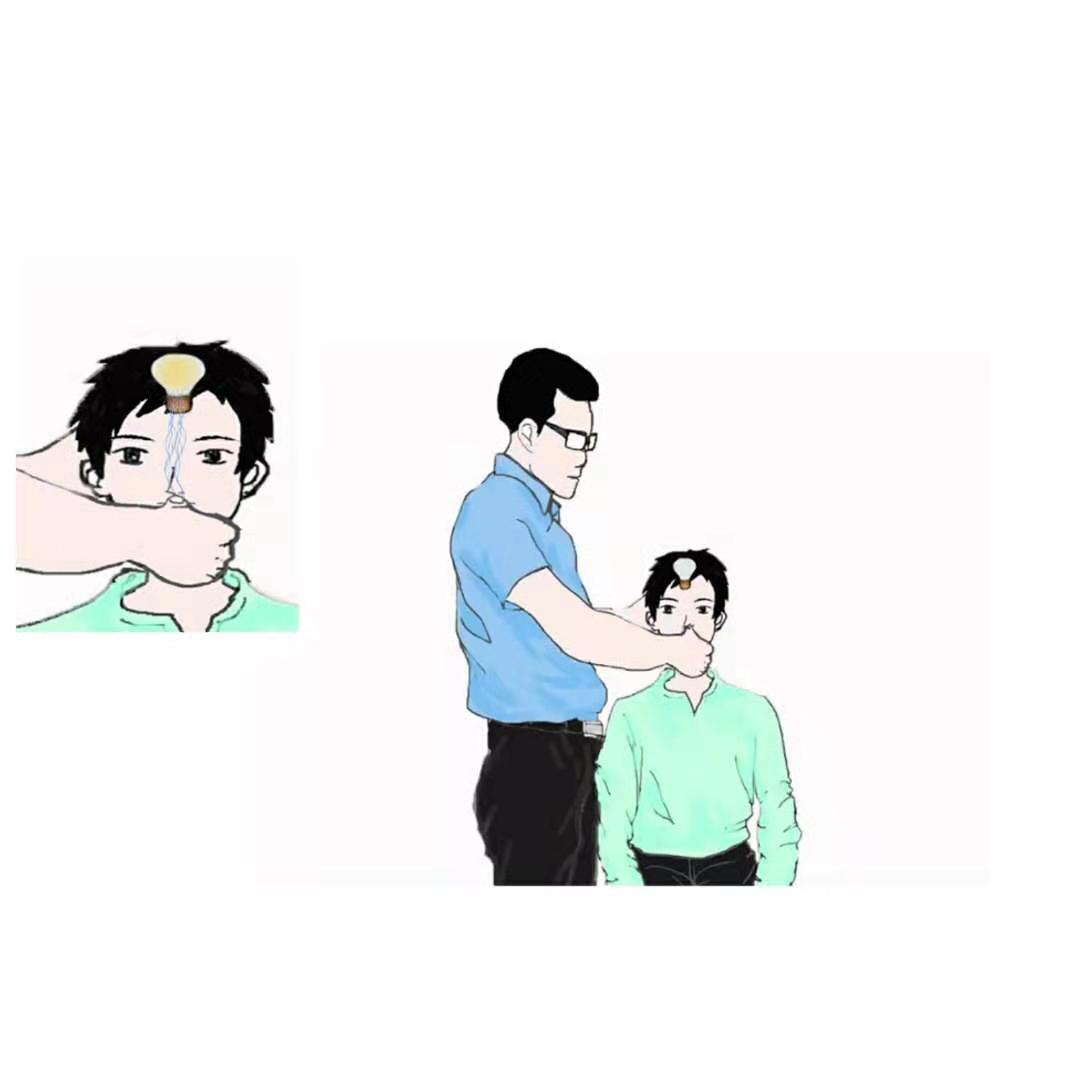
当前课程知识点:3ds Max: A Quick Start from Zero to One > Chapter 2: 3D Modeling > 2.6.1 Advanced Modeling Skills 1:“Stereoscopic” Modeling Method > 2.6.1 01
返回《3ds Max: A Quick Start from Zero to One》慕课在线视频课程列表
返回《3ds Max: A Quick Start from Zero to One》慕课在线视频列表
哈喽大家好
前面的课程中我们介绍了
多边形建模面板
和建模工具的使用方法
那么
关于建模方面的知识点
我们已经全部讲完了
接下来
你需要思考的是
如何运用前面所学工具
更快、更轻松的
帮助你完成建模
这一讲
我们先来介绍
“立体”思维法
让你从另一个角度
玩转家具、建筑类模型
在介绍“立体”建模法之前
我们先来看看
小朋友是如何绘画的
刚开始时
先从整体结构入手
用几何图形
概况房子的比例结构
让其具有一定的识别性
再逐步细化结构关系
加个门做个窗
让对象具有识别特征
现在的房子还是平面图
给房子加个厚度
就有了三维空间感
所谓“立体”建模法
就是根据这样的原理
运用平面图投射原理
生成平面模型
通过添加模型厚度
达到立体效果
或许你会问
“平面图”就是
二维样条线吗
不是的
它是三维面片
这里呢就不卖关子了
我们以家具为例
看看具体的操作方法
首先可以从网络
人体工程学书籍
或是设计图纸中
获得创建对象的基本信息
根据创建对象的平面尺寸
使用创建命令面板下的
平面工具
创建平面模型
在平面模型上
使用连接命令加线
结合分离工具
划分出平面不同区域的关系
或许你会想
这么简单吗
其实不然了
这里我们要使用
先加线
后分离
再加线的技巧
如果只顾着加线
后续分离呢就会出现废点
分离会计算面上的点
当分离的线中没有点
分离后的对应边界也就没点
当面中插入了一条线
就会产生新点
分离后另一个面
就会出现空点
俗称废点
当一条线上有一个空点
分离后两个面都会有废点
因此我们需要先加线
用分离命令将面分离到元素
然后在分离的面上补充线
再分离
后续呢就不会出现废点了
这个技巧你学会了吗
当然
如果还不熟悉
分离命令的朋友
请务必观看前面的课程
来简单复习一下
通过结合壳修改器
或多边形建模法的挤出命令
将平面模型进行立体化操作
壳修改器和挤出命令
都可以增加模型的厚度
壳所生成的是立方体
但要注意壳会生成一些废面
待模型完成后要记得清理
而挤出命令所挤出的是壳
遇到特殊的底面
看不到的内部面时才会使用
一般情况下
常用壳修改器的方式
提高厚度
但在使用时
切记要分离需要加厚的对象
否则全部模型都会加上厚度
当你学会了
使用壳和挤出制作模型后
如何在原基础上
复制模型进行细化
就是最棘手的问题
这里为大家提供两种方法
当需要实现
有距离的克隆多边形
可以选择面
按住Shift配合移动工具
就可以了
此时会弹出
克隆部分网格窗口
问你是让克隆的对象
自己出去成个组
还是留在组里
可以根据自己的需要
进行选择
当不需要模型移动
只想原地克隆多边形
可以选择需要克隆的多边形
使用分离命令
记得勾选分离到元素
和以克隆对象分离
就可以原地克隆了
如何让两个面
连接成一个几何体呢
此时
使用桥命令
就可以生成柜子的横杆结构
横杆完美的与柜体主梁贴合
省去了对位的烦恼
完成后
记得删除看不到的面哦
这里需要注意的是
由于我们
从原位克隆的多边形
法线方向没变
因此使用桥命令后
会出现法线内翻问题
这时就需要选择模型
使用元素下的翻转命令
校正法线
“立体”建模法
让我们从平面结构入手
通过增加厚度的方式
生成立体模型
对于刚从平面
转到三维的朋友来说
该方法易于上手
能帮助你把握结构
面与面的贴合
还能提高制作效率
但“立体”建模法
也不是万能的
如果面对结构稍微复杂
平面无法投射的区域
“立体”建模法
会变得很复杂
下一讲呢
我们会介绍另一种建模思维
让你用“盒子”的方式
弥补“立体”的不足
不要错过哦
拜拜
-Fast Understand of 3ds Max,Starting Your Virtual Journey
--Preface
-Preface
-1.1 How to get 3ds Max
--1.1 02
-1.1
-1.2 Introduction to the Interface of 3ds Max
--1.2 01
--3ds Max
-1.2
-1.3.1 Project Preparation 1: Set Up Project Folder
--1.3.1
-1.3.1
-1.3.2 Project Preparation 2:Initialization Settings
--1.3.2
-1.3.2
-1.4.1 Opening and Saving Files
--1.4.1
-1.4.1
-1.4.2 Basics Operation
--1.4.2
-1.4.2
-1.4.3 Advanced Operation
--1.4.3
-1.4.3
-1.5 General Hotkeys
--1.5
-1.5
-1.6 Creating Geometric Primitives
--1.6
-1.6
-2.1 3D Modeling Overview
--2.1
-2.1
-2.2 Three Useful Modeling Methods
--2.2
-2.2
-2.3 Boolean Modeling
--2.3
-2.3
-2.4.1 Spline Modeling 1:Spline Modeling Overview
--2.4.1
-2.4.1
-2.4.2 Spline Modeling 2: Modeling From a Spline
--2.4.2
-2.4.2
-2.4.3 Spline Modeling 3:How to Edit Spline Objects
--2.4.3
-2.4.3
-2.5.1 Polygon Modeling 1:Polygon Modeling Method
--2.5.1
-2.5.1
-2.5.2 Component Selection Techniques
--2.5.2
-2.5.2
-2.5.3 Polygon Modeling 3: 16 Polygon Modeling Commands
--2.5.3
-2.5.3
-2.5.4 Polygon Modeling 4: Subdivision Modeling
--2.5.4
-2.5.4
-2.5.5 Polygon Modeling 5: Attaching and Detaching
--2.5.5
-2.5.5
-2.6.1 Advanced Modeling Skills 1:“Stereoscopic” Modeling Method
--2.6.1 01
-2.6.1
-2.6.2 Advanced Modeling Skills 2:Box Modeling Method
--2.6.2
-2.6.2
-2.6.3 Advanced Modeling Skills 3:Deconstruction Modeling Method
--2.6.3
-2.6.3
-2.6.4 Advanced Modeling Skills 4:Problems to be Considered in Modeling
--2.6.4
-2.6.4
-3.1 Rendering
--3.1 02
-3.1
-3.2.1 Render Your First Work
--3.2.1 02
-3.2.1
-3.2.2 Arnold Render Set Up
--3.2.2 01
-3.2.2
-3.2.3 Introduction to the Arnold Renderer
--3.2.3
-3.2.3
-3.2.4 Arnold Renderer 1: Sampling
--3.2.4 02
-3.2.4
-3.2.5 Arnold Renderer 2: RayDepth and Filtering
--3.2.5 02
-3.2.5
-3.3.1 What is Light?
--3.3.1 02
-3.3.1
-3.3.2 Light and Color
--3.3.2 02
-3.3.2
-3.3.3 Light and Shadow
--3.3.3 02
-3.3.3
-3.3.4 Produces Soft Shadows and Fast Shadow
--3.3.4 02
-3.3.4
-3.3.5 Six Types of Lighting
--3.3.5 01
-3.3.5
-3.4.1 Arnold Light Types
--3.4.1 01
-3.4.1
-3.4.2 Arnold Light Parameters
--3.4.2 01
-3.4.2
-3.4.3 Color Temperatures and White Balance
--3.4.3 01
-3.4.3
-3.5.1 Three-point Lighting Method
--3.5.1
-3.5.1
-3.5.2 Indoor Light Lecture 1: Make a Simple Night
--3.5.2
-3.5.2
-3.6.1 Advanced Skill 1:Rendering Tips
--3.6.1
-3.6.1
-3.6.2 Advanced Skill 2:The Normals and the Smooth Group
--3.6.2
-3.6.2
-4.1 Learn About This Chapter in Four Minutes
--4.1
-4.1
-4.2.1 How to Open the Material Editor?
--4.2.1
-4.2.1
-4.2.2 Using Physical Materials
--4.2.2
-4.2.2
-4.2.3 Three Assistants of the Material
--4.2.3
-4.2.3
-4.2.4 Create a Simple Material
--4.2.4
-4.2.4
-4.3.1 Using maps to Creat Different Looking
--4.3.1
-4.3.1
-4.3.2 Bitmap Node:A Small Node With Virtues
--4.3.2
-4.3.2
-4.4.1 UVW Mapping Method 1:Methods of Locking the Map
--4.4.1
-4.4.1
-4.4.2 UVW Mapping Method 2: UV Overlays
--4.4.2
-4.4.2
-4.4.3 Unwrap UVW 1: Basic of Unwrap UVW Modifier
--4.4.3
-4.4.3
-4.4.4 Unwrap UVW 2: Projection
--4.4.4
-4.4.4
-4.4.5 Unwrap UVW Part 3: Powerful UV Editor
--4.4.5
-4.4.5
-5.1 Animation Overvie
--5.1
-5.1
-5.2.1 3ds Max Animation
--5.2.1
-5.2.1
-5.2.2 Making Animation More Interesting Principle 1: Time and Space
--5.2.2
-5.2.2
-5.2.3 Making Animation More Interesting Principle 2: Slow Motion (slow-mo)
--5.2.3
-5.2.3
-5.2.4 Making Animation More Interesting Principle 3: Squash and Stretch
--5.2.4
-5.2.4
-5.3.1 Animation Technique 1: Parent-Child Relationship
--5.3.1
-5.3.1
-5.3.2 Animation Technique 2:Loop Animation
--5.3.2
-5.3.2
-5.4.1 Techniques of Using the Camera
--5.4.1
-5.4.1
-5.4.2 The Safeframe Cannot Be Ignored in the Camera
--5.4.2
-5.4.2
-5.4.3 Camera Movement
--5.4.3
-5.4.3
-5.4.4 Following Shot
--5.4.4
-5.4.4
-6.1 Rendering a VR Panorama With Arnold
--6.1
-6.1
-6.2 Fast Implementation of VR Interaction
--6.2
-6.2
-6.3 Fast Implementation of AR Interaction
--6.3
-6.3
-6.4 Friends of 3ds Max
--6.4
-6.4
-6.5 Self Learning and Improvement Methods
--6.5
-6.5
-6.6 Methods of Obtaining Resources
--6.6
-6.6
-7.1 PBR Technology Introduction
--7.1
-7.2 Toolbag PBR Real-time Rendering
--7.2
-7.3 Substance Painter PBR Painting
--7.3
-Shortfilm Casestudy 1:The Weapon Used in PUBG (PlayerUnknown's Battlegrounds)
--Microfilm Course 1:The Weapon Used in Eating Chicken
-Shortfilm Casestudy 2:Production experience of Classic of Mountains and Seas
--Microfilm Course 2:Production Process of Shanhaijing
-Examination
